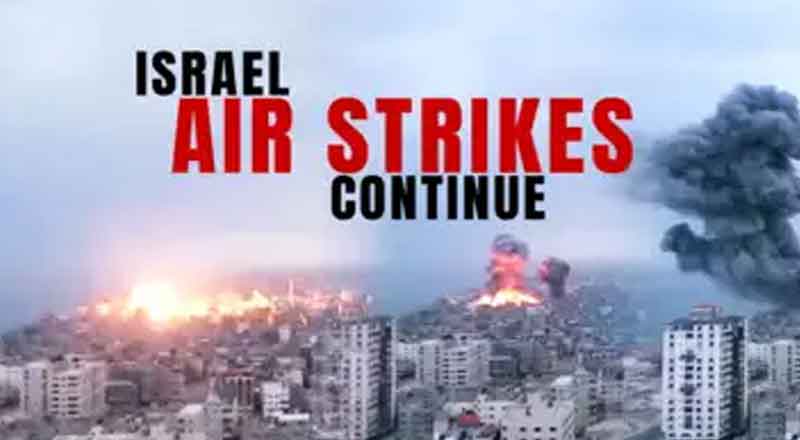Global human rights organizations Amnesty International and Human Rights Watch have accused the Israel Defense Forces (IDF) of using white phosphorus munitions in Gaza and Lebanon, in violation of International Humanitarian Law (IHL), which lays down the responsibilities of states and non-state groups in an armed conflict.
Citing eyewitness accounts and video evidence, they have said that Israel’s use of such munitions in densely populated areas poses grave, long-term risks to civilians. The IDF has denied the allegations.
Here are 5 things you need to know about the highly controversial white phosphorus munitions.
What is white phosphorus?
White phosphorus is a pyrophoric that ignites when exposed to oxygen, producing thick, light smoke as well as intense 815-degree Celsius heat. Pyrophoric substances are those that ignite spontaneously or very quickly (under five minutes) when in contact with air. It is among the most unstable of pyrophoric substances. White phosphorus emits a distinct garlic-like odour.
What are the military uses of white phosphorus?
White phosphorus is dispersed in artillery shells, bombs, and rockets. It can also be delivered via felt (textile) wedges soaked in the chemical.
Its primary military use is as a smoke screen, used to hide troop movement on the ground. The smoke acts as a visual obscurant. White phosphorus is also known to mess with infrared optics and weapons tracking systems, thus protecting forces from guided missiles. Munitions can either be ground-burst for more concentrated smoke, or air-burst in order to cover a larger area. White phosphorus can also be used as an incendiary weapon. According to HRW, US forces used white phosphorus munitions during the second battle of Fallujah in Iraq in 2004, to force concealed combatants to abandon their positions.
How harmful is white phosphorus?
Upon exposure, white phosphorus can cause severe burns, often down to the bone. The burns are excruciatingly painful, difficult to heal, and susceptible to infections. Particles of white phosphorus that remain lodged in the body can reignite if in contact with air. According to HRW, white phosphorus burns on even 10 percent of the body can be fatal.
Inhaling white phosphorus particles or smoke can cause respiratory damage and harm to internal organs. White phosphorus can also devastate infrastructure and property, damage crops and kill livestock, with raging fires, especially in windy conditions.
When were white phosphorus munitions first used?
Irish nationalists in the late 19th century first used white phosphorus munitions, in a formulation that became known as “Fenian fire” (Fenian was an umbrella term for the Irish nationalists). World War I saw extensive use of chemicals by the British and Commonwealth forces in phosphorus grenades, bombs, shells, and rockets.
What is the legal status of white phosphorus munitions?
White phosphorus munitions are not under a blanket ban, though their use is regulated under the IHL. It is not considered a chemical weapon because its operational utility is primarily due to heat and smoke, rather than toxicity. Thus, its use is governed by the Convention on Conventional Weapons (CCW), specifically Protocol III, which deals with incendiary weapons. Palestine and Lebanon have joined Protocol III, while Israel has not ratified the protocol.
(With inputs from agencies)





